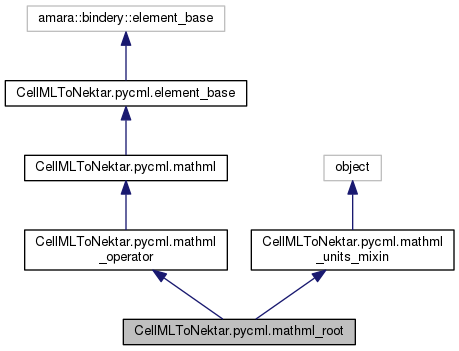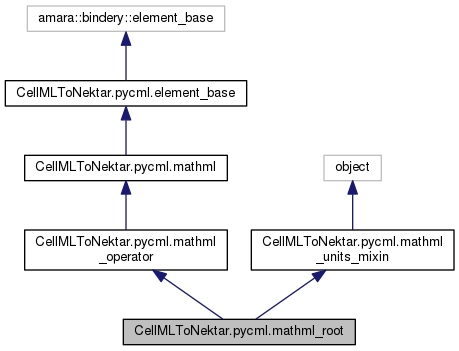|
Nektar++
|
All Classes Namespaces Files Functions Variables Typedefs Enumerations Enumerator Properties Friends Macros Pages
|
Nektar++
|


Public Member Functions | |
| def | evaluate |
 Public Member Functions inherited from CellMLToNektar.pycml.mathml_operator Public Member Functions inherited from CellMLToNektar.pycml.mathml_operator | |
| def | wrong_number_of_operands |
 Public Member Functions inherited from CellMLToNektar.pycml.mathml Public Member Functions inherited from CellMLToNektar.pycml.mathml | |
| def | __init__ |
| def | __repr__ |
| def | __deepcopy__ |
| def | clone_self |
| def | get_original_of_clone |
| def | get_component |
| def | model |
| def | eval |
 Public Member Functions inherited from CellMLToNektar.pycml.element_base Public Member Functions inherited from CellMLToNektar.pycml.element_base | |
| def | __init__ |
| def | __delattr__ |
| def | __setattr__ |
| def | rootNode |
| def | cmeta_id |
| def | xml_remove_child_at |
| def | xml_doc |
| def | xml_properties |
Private Member Functions | |
| def | _set_in_units |
Additional Inherited Members | |
 Static Public Member Functions inherited from CellMLToNektar.pycml.mathml Static Public Member Functions inherited from CellMLToNektar.pycml.mathml | |
| def | clone |
 Public Attributes inherited from CellMLToNektar.pycml.element_base Public Attributes inherited from CellMLToNektar.pycml.element_base | |
| xml_attributes | |
 Properties inherited from CellMLToNektar.pycml.mathml Properties inherited from CellMLToNektar.pycml.mathml | |
| component = property(get_component) | |
|
private |
Set the units of the application of this operator. Set the degree to have units of dimensionless, and the operand to have an arbitrary member of its possible units set. Where these mean the <apply> doesn't have the given units, wrap it in suitable units conversion mathematics.
Definition at line 5762 of file pycml.py.
References CellMLToNektar.pycml._child1(), and CellMLToNektar.pycml.mathml_units_mixin._set_element_in_units().
| def CellMLToNektar.pycml.mathml_root.evaluate | ( | self | ) |
Return the operand to the given degree, if present. Otherwise return the square root of the operand.
Definition at line 5787 of file pycml.py.
References CellMLToNektar.pycml.mathml.eval(), and CellMLToNektar.pycml.mathml_operator.wrong_number_of_operands().
Referenced by CellMLToNektar.pycml.mathml_constructor._eval_self().
 1.8.8
1.8.8